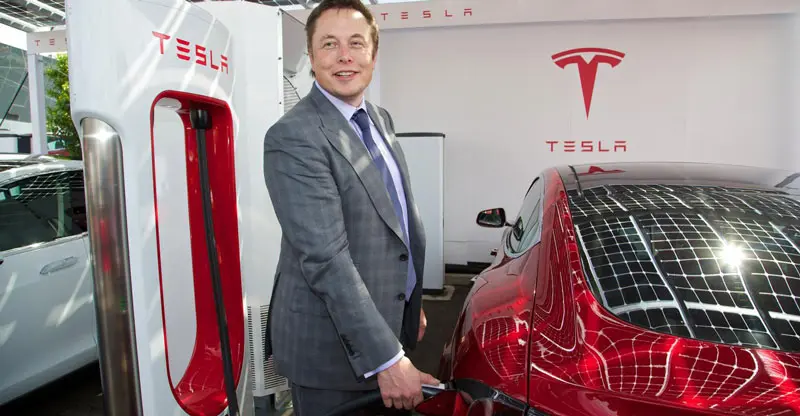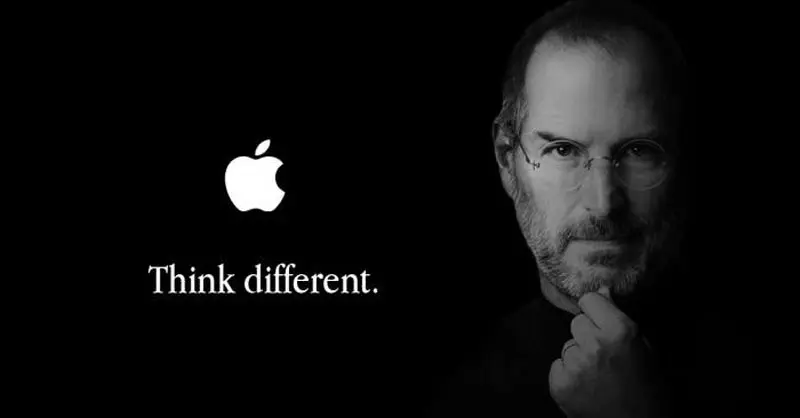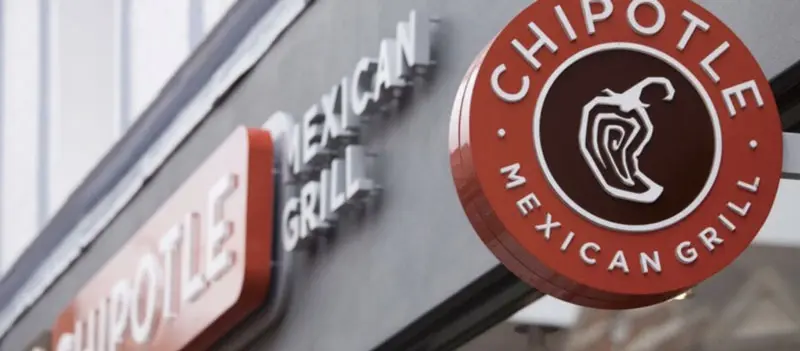Before we motivate you to find a unique position for your brand with these exceptional examples of brand positioning, let’s take stock of this strategic task.
When it comes to building a brand, no task is more critical than developing the brand positioning strategy.
Think about it…
The entire end goal of branding and marketing is to show your target customers why they should choose your brand over those pesky competitors. Strong brand positioning is essential as you look to establish yourself in a space dominated by others.
Although the question “Why should I choose your brand and not the others?” is seldom asked directly, it’s most certainly asked in the subconscious of your audience before any buying decision is made.
A strong answer to this question is a competitive advantage. If you don’t have a clear and unique answer for them, you’re losing out to the competitors that do.
In this article, we’ll take a look at what makes an effective brand positioning strategy and how some of the world’s most successful brands position themselves as the high-quality alternative for their customer’s needs.
The Video Breakdown
One-click subscribe for video updates
What Is Brand Positioning?

According to the “Father of Modern Marketing” Philip Kotler, brand positioning is:
The act of designing the company’s offering and image to occupy a distinctive place in the mind of the target market
In other words, your positioning strategy attempts to tell your target audience (and have them remember) why they should pick your brand over your competitors.
It’s quite simple, really. Although that is simplifying it to the extreme.
If you want to dive deeper into what brand positioning is and how to develop a brand positioning strategy, check out this article: What is Brand Positioning?
PRO Brand Strategy BluePrint
Build Brands Like A Pro Brand Strategist

Characteristics Of An Effective Brand Positioning Strategy

When developing a positioning strategy for your brand, it’s important to weave through some critical characteristics.
Valuable

The position you take in the market and subsequent offers you make to your audience must represent a sense of value. The value needs to be clearly communicated and easily understood.
Unique

Your positioning strategy should be unique. The best marketing strategies can’t save you if you enter the market offering the same products, services, pricing, quality or experience. Your brand will fail at the first hurdle: To stand out as an obvious choice.
Clear

There is no room for a lack of clarity when communicating the uniqueness and value of your market position.
You might have created a truly unique position with the ability to disrupt your entire industry, but if your audience can’t clearly understand the benefit to them, it will fail.
Deliverable

This goes without saying, but your positioning strategy is kind of a big deal. It’s the core of your entire brand strategy and the rest of the entire brand strategy will be built out from it.
If you’re not 100% confident of delivering on the position you’re carving out for your brand, then pick another position. The quickest way to kill a brand is by not delivering on its brand promise.
Relevant

Your brand position is developed with a focus on the market landscape and its key players (i.e. your audience and your competitors).
If you haven’t taken a customer-centric approach with your audience’s wants, needs, desires and fears or your competitors’ strengths and weaknesses at its core, your positioning strategy will lack relevancy.
Explore Brand Strategy
Programs & Tools
Brand Positioning Example #1:
Tesla

Tesla’s brand positioning is one of strength. The automaker’s brand positioning statement reads, “the only stylish car that can go from 0 to 100 in 3 seconds without a drop of oil.”
When Elon Musk took over in 2008, he re-positioned the electric vehicles brand as “the new technology for clean energy.”
With engaging storytelling, a prestige pricing strategy and target market segmentation, they created the demand and a subsequent market for a premium all-electric luxury car.
Tesla is not the only brand providing luxury cars. It’s not the only brand providing electric cars. It’s not even the only brand providing luxury-electric cars.
But it is the only brand providing only luxury electric cars and in turn is setting the pace in this new industry.
Another unique aspect of the position it holds in the market is the purpose from which it stems.
Tesla’s mission is “to accelerate the world’s transition to sustainable energy,” and their new technologies are pushing the industry forward, specifically with the range their cars can accomplish.
As they move into the affordable car market, they take with them the esteem that comes from their association with high-end exclusivity and luxury.
Tesla is the trendsetter and pacesetter within the luxury electric car sector and its pioneering spirit sprinkles an element of magic across the brand.
Brand Positioning Example #2:
Apple

Apple is just about as close as you can get to the picture-perfect example of a strong brand. According to its statement, the tech giant’s goal is, “to bring the best user experience to its customers through innovative hardware, software, and services.”
They’re not in the market competing for low prices or trying to collaborate with everyone. The Apple brand has established a position as a one-of-a-kind disruptor. With their unapologetic premium pricing, innovative technology and an end-to-end experience that their customers salivate over, Apple knows they are more than just a company that sells computers.
The story of Steve Jobs and his vision of a brand that could help to change the world is now the stuff of legend and fits in, almost poetically, to the position they now hold.

Since Apple encouraged their customers to “Think Differently,” they have aligned themselves with an idea that those who think differently change the world.
By purchasing Apple products, their customers align themselves with the innovative, imaginative and creative characteristics they hold in such esteem.
Apple is the king of technology. And although their technology has helped to change the world, it’s the strength of their brand position that has given them the freedom to continue to innovate for so long.
Brand Positioning Example #3:
Dollar Shave Club

The Dollar Shave Club came into the market and executed an against position to perfection.
Without the benefit of a budget, a marketing agency or even a marketing department, the Dollar Shave Club set in place a series of business practices and marketing tactics that would catapult them to stardom and riches.
Gillette had been sitting on their lofty perch with 85% of the men’s razor blade market when the Dollar Shave Club came along and told a frustrated market segment what they already knew and needed to hear.
They didn’t need to pay inflated prices for over-developed razors just to have a smooth shave.
There was a better, cheaper and easier way.
The Dollar Shave Club caught Gillette resting on its laurels and went on to steal over 50% of the online men’s razor market before Unilever swooped in with a $1 Billion dollar takeover.
Yep… That was “Billion” with a capital “B.”
Brand Positioning Example #4:
Nike

Nike was born from a competitive track and field heritage in Portland, Oregon and built on old-school innovation that involved a household waffle iron.
These competitive and innovative characteristics have become part of the DNA of the Nike brand, which has seen it scale to unimaginable heights.
Though the brand began as a business selling running shoes, they have leveraged their reputation of quality and association with winning to expand the brand into broader athletic wear and fashion.
Since its 1987 “Just Do It” campaign, Nike has transcended beyond a business that sells running shoes and has amassed an army of loyal followers who share the same competitive “play to win” attitude, clearly represented in its positioning statement: “For serious athletes, Nike gives confidence that provides the perfect shoe for every sport.”
Their alignment with the most successful athletes on the planet in key sports such as NFL, NBA, Tennis and Soccer has associated the brand with an idea.
“Nike is a brand for winners.”
Brand Positioning Example #5:
HubSpot

Hubspot began as an email marketing tool and coined a term that has now become a core practice in this content-driven world: “inbound marketing.” They’ve since integrated social media, ads, content management, lead generation, and even sales automation.
While many of us like to use the types of brands that stay in their lane and don’t give us something half-baked as an add-on, on the web, the name of the game is integration.
Anyone in the online business world can attest to losing days or even weeks trying to get one piece of software talking to another so everything “just works.”
Hubspot has evolved organically to meet the needs of its customers with a software and platform that is integrated out of the box with everything from marketing automation to CRM to sales and service and features easy-to-use templates to simplify the non-expert’s work.
HubSpot’s positioning statement reflects its efforts to help companies thrive: “
Since 2006, HubSpot has been on a mission to make the world more inbound. Today, over 100,000 total customers in more than 100 countries use HubSpot’s award-winning software, services, and support to transform the way they attract, engage, and delight customers. Composed of HubSpot’s CRM, Marketing Hub, Sales Hub, and Service Hub, HubSpot gives companies the tools they need to Grow Better.”
Additionally, their early market advantage has given them a headstart on competitors late to the party. And the nature of their business means their customers can’t just up and leave without some serious effort to do so.
These factors, along with their customer-focused approach and ability to evolve, have seen HubSpot’s position grow in strength.
Brand Positioning Example #6:
JetBlue

Before JetBlue, the idea around air travel was that competitive fares and comfortable travel were mutually exclusive.
You either sacrificed the comfort for the savings in cost or you sacrificed the dollars for the comfort.
JetBlue came onto the scene with a refreshing focus on bringing fun, comfort and value into the US domestic air travel market.
Their value proposition combined what users wanted most — comfort without a hefty price tag. Perks, such as extensive in-flight entertainment, comfortable leather seating and additional legroom, flew in the face of traditional budget air travel and earned JetBlue a reputation (and a strong position) as the go-to airline for value within the U.S.
Brand Positioning Example #7:
Chipotle

For years, Taco Bell ruled the roost of Mexican fast food restaurants within the U.S. But then, chipotle came along with a focus on quality.
Using the tagline “Food with integrity” to help associate the brand with quality and earn that position in the mind of its audience, Chipotle has been well positioned to ride the ever-increasing wave of conscious customers.
Their position-enhancing tagline is far more than just a branding message as it clearly communicated the beliefs and values of the internal brand.
From its use of fresh local products to hand-prepared meals, Chipotle is a brand with substance that follows through on its values, earning loyal customers and brand advocates along the way.
When it comes to fast food, there are many options. But when it comes to fresh, locally produced, hand-made Mexican food… there is Chipotle, sitting in a strong position.
Conclusion
The success or failure of any brand hinges on the success or failure of the position they take in the market.
A lack of strategic thinking or differentiation is the easiest way for a brand to blend into the crowd and disappear without anyone ever knowing it existed.
Bold brands that capture the attention and imagination of their audience are born in the strategy room from creative thinking and problem-solving.
If you’re building a brand and you haven’t yet identified the position you want to own, it’s time to find a strategy room.
Do you have a strategy room for your strategic thinking?
Do you have any handy hacks for creating a strategic thinking environment?
Let me know in the comments Right Now!
On-Demand Digital Program
Brand Master Secrets
Make the transition from hired-gun to highly valued brand strategist in less than 30 days. The systems, frameworks and tools inside this comprehensive program are all you need to level up.








